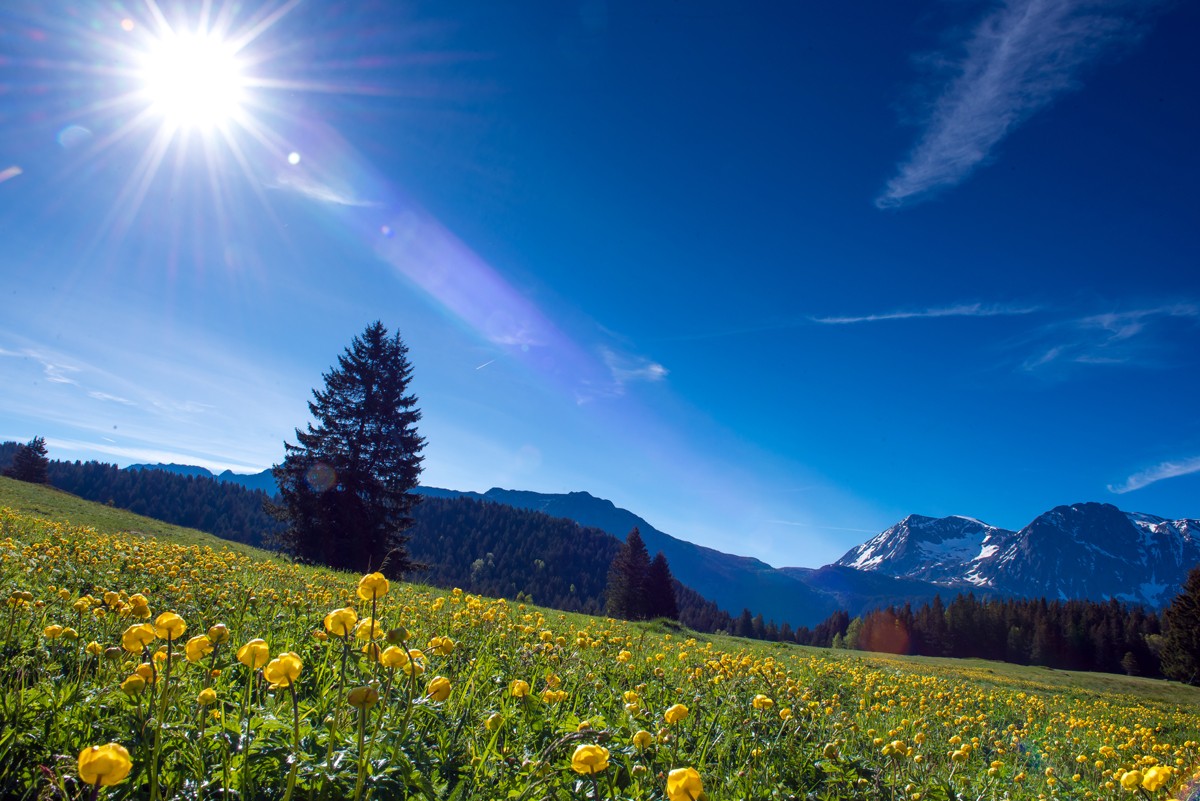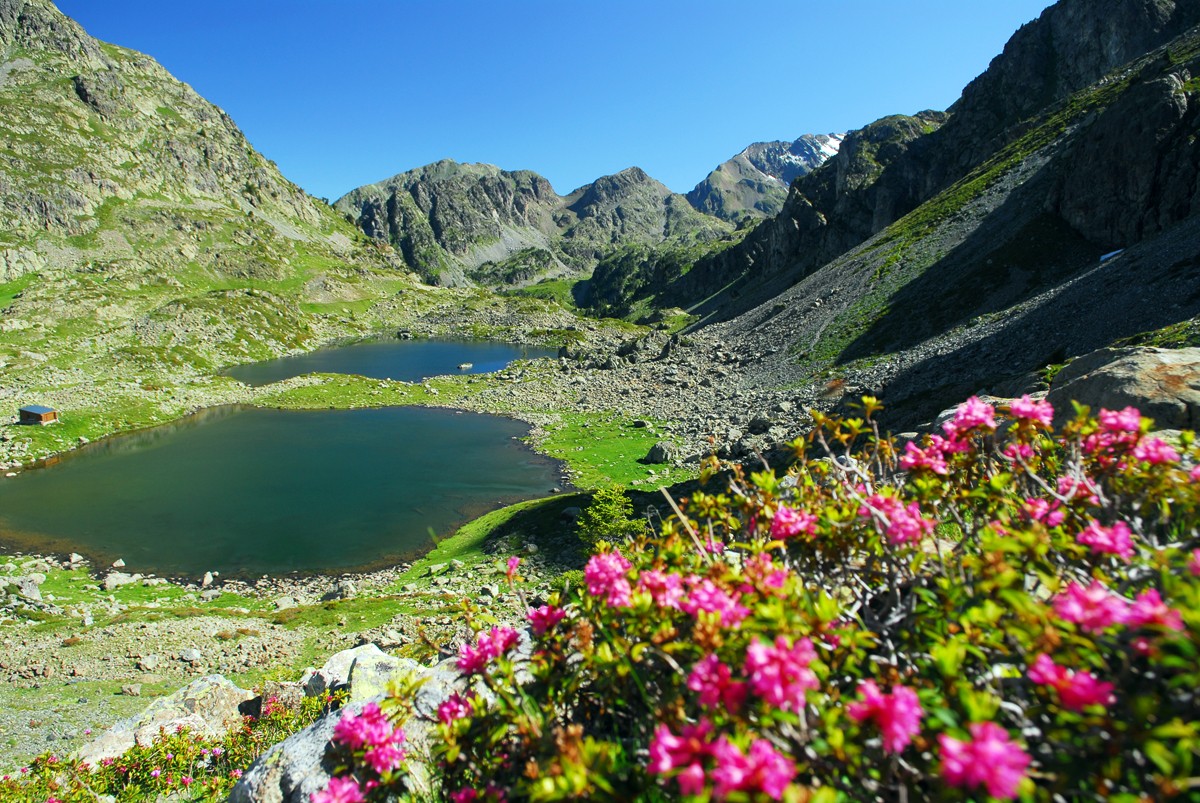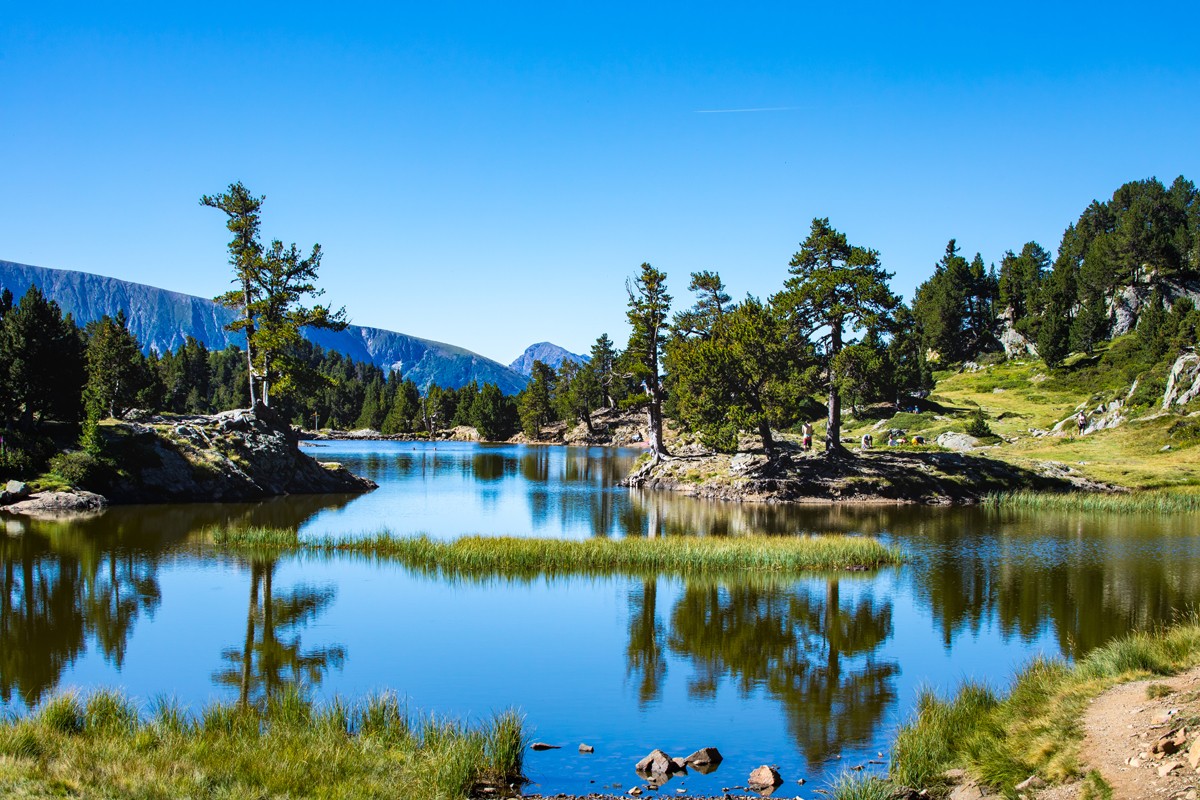
Arselle plateau
At the borders of the plateau, there is a rich flora, but the main part ot this area is the inside which is a beautiful
high-altitude marshe. It is a poor environment, saturated of water and acid. That is why we can find a specific flora and fauna. This is a real nature conservation area as itw as during the ice age.
The biological degradation for a marshe is slow. It constitute, thank to pollen conservation, a rich heritage made by history and climate.
60 species are identified, for 40 in the Arselle plateau marshe. The most importants are: sphagnum, cottongrass and butterwort. We found 2 protected species refering to the national plan: droseras and small carnivorous plants (insects eating plants).
Please note: the Arselle plateau is a protected area (peat bog classified as an APPB - "Arrêtés Préfectoraux de Protection Biotope") so there are a few rules to follow to help protect it. Fire, wild camping, bivouac, picking and dumping of waste are strictly forbidden. Please stay on the path around it, it is forbidden to go on the plateau in order to preserve the fragile environment.
Discover the Plateau de l'Arselle with a range of family hikes departing from Chamrousse 1750, Chamrousse 1650 or the Arselle loop.
Robert lakes
At the beginning, the Robert lakes were one icy lake which form a bowl. Then, this unique lake was splits in two then three, which were dry, during the 50s. This
lakes are feeded by snow water and for two small sources called les Trois Fontaines.
The « Robert » name might come from the « sheeps » which are drinking the lake’s water. Even now, you can meet the sheperd and its herd during summer, around the Robert lakes.
Today, there are 4 lakes. The two biggest are separated only when water is missing. The maximal depth for the 2 biggest lakes are 24 meters and 8 meters (Grand Sorbier side) whereas the rest is not deep at all. The water levels can moove, from months to months, thanks to rain.
At 1998 meters high, they measure until 28 hectares. Thanks to this altitude, they are frozen during winter. Three peaks circle the Robert lakes: Petit Van, Grand Van and Grand Sorbier.
This area is protected because of the rare and diverse flora and fauna. The site is part of the Natura 2000 above its 2677 ha. You can fish lake trouts there.
Caution next to Robert lakes: the shepherd of Chamrousse has dogs with his herd (but no patous), for a good cohabitation between mountain people and the work of the shepherd, thank you for respecting some instructions. Do not cross the herd, do not try to pet or feed the dogs or the herd, do not make sudden gestures or throw things that could frighten the dog, do not start running and avoid taking photos from too close...
More information on fishing, bivouac regulations and sports trails to discover the Robert lakes (from Chamrousse 1650 via Pourettes lake or Brèche Sud, or the Robert lakes loop).
Achard lake
This lake is fabulous, it is circle by trees, more and more sparsed thanks to the altitude (until more or less 2200m). This lake is well oriented and well located, facing the Infernet mountain pass.
The bogs are located around the principal lake, in the form of small lakes (the real name is « Achard Lakes »), but which biologic activity is very particular.
When it is shinny, you will have a view on the Taillefer pic.
From 2019 Achard lake is protected by the "ENS Arselle Achard" classified like sensitive natural area.
Please note: fire, camping, fishing and swimming are strictly forbidden on Achard lake (under penalty of fine). Bivouacking is permitted from sunset to sunrise (except from mid-June to mid-September when there are too many people in the summer).
Please stay on the paths to preserve the fragile environment.
More information on family hikes to discover Achard lake from Arselle plateau, Croix de Chamrousse (via the gondola), Chamrousse 1750 or Bachat-Bouloud, and the regulations banning swimming and bivouacs.
Cembraie
Its the most original natural area in the city, made from different cembros (or arolles) pines.
The Chamrousse cembraie is the most western of the French Alps, forming a remarkable landscape mixing, in a unique way in the Western Alps, cembro and hooked pines.
The blueberry and rhododendron cembraie found in Chamrousse is a type of habitat, usually found above 1950 m, on the coolest exposures, dominated by the cembro pine, with spruce and hooked pine in scattered individuals.
The shrub layer is dominated by rhododendron and blue camellia, while the herb layer is dominated by bilberry and cranberry.
- Ecological factors: the Swiss stone pine needs the spotted nutcracker to disperse, as its seeds, enclosed in thick sheaths, require the bird's beak to extract them and allow them to germinate. Hence the establishment of trees in clumps after forgetting a cache of seeds.
- Human factors: grazing before the agricultural decline caused the disappearance of this habitat due to excessive pressure on regeneration. Today, in certain ski areas, the young trees are being damaged by skis, which endangers the natural regeneration.
- Ecological and biological values: the mature cembraies, in equilibrium, are not very extensive, they present a flora representative of the subalpine level and a mosaic of habitats very interesting by the great number of niches offered to the fauna and flora.
You can admire the cembra grove in all its splendour in the small Pourettes lake area, with its hike starting from Chamrousse 1650.




